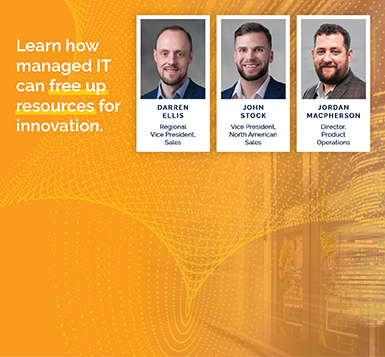How to Improve the Uptime of Data Center Systems
Park Place Hardware Maintenance
Data center Uptime is the guaranteed availability a data center can offer annually. Being able to offer uptime is one of the core business goals of any data center.
Positive uptime allows data centers to align themselves with the modern-day requirements that many businesses require. In order to achieve uptime goals, a data center needs to place a lot of focus on redundancy, processes, and certifications.
As data centers continue to play an integral role in business and organizational activities, companies will continue to demand reliability. This means that while in the digital age, uptime is not just a bonus, but a requirement.
What Is Data Center Uptime?
Data Center Uptime is the calculation of how often different resources are available in every minute, and even second, of a year. Uptime is a simple concept in general, but there are many factors that come into play when measuring Uptime in a data center.
Typically, uptime is measured in the past in “nines.” This is an industry calculation meaning from 99%. This measurement displays the ration between the number of minutes and the total number of minutes in a year where a data center is working to its full capacity. This information aids in understanding how to increase the performance of a data center or system on many different levels.
Data Center Uptime Tiers
The uptime of a data center is categorized in tiers, the first being the “slowest”, and fourth being the “fastest”.
- Tier 1: availability of 99.671%
- Tier 2: availability of 99.741%
- Tier 3: availability of 99.982%
- Tier 4: availability of 99.995%
What is a Good Uptime?
The best uptime is considered tier 4, which is availability of 99.995%. Under no circumstance should your uptime fall below tier 1, an availability of 99.671%.
What is Standard Uptime?
Standard uptime can be anywhere from 95%-99.999%. You should not accept this just because it is standard, and seek out a support provider who can make your system and network uptime as close to 100% as possible.
What Affects the Uptime of Data Center Systems?
The opposite of uptime is downtime. Downtime is caused by a variety of issues and is the most common issues that data centers face.
System Failure
When using old or unstable IT infrastructure, it can be difficult to stay up to date with fast speeds and good uptime. Typically the reason for system failure is inadequate monitoring tools. When using an efficiently monitored data center. By continuously improving your system with regular maintenance, you can minimize unplanned downtime and promote uptime.
Human Error
Unfortunately, human error does exist. This is not something that can not be planned nor necessarily prevented. Because of this, data centers must have specific processes for execution. This means that systems need to be maintained, repaired, tested, and monitored 24 hours per day, 7 days per week. Downtime can occur as a result of breakdowns in processes or improper human execution.
Natural Disasters
Along with human error, natural disasters are also inevitable. Natural disasters can include anything from a hurricane to an earthquake, or even a man-made disaster such as a major power grid outage. By having a good disaster recovery plan in place your data center can avoid downtime.
How to Increase Data Center Uptime
Although maintaining 100% uptime is not necessarily achievable due to factors that cannot be planned, there are ways to get as close as possible. Increasing data center uptime can be achieved by:
Detailed planning: This should be done to minimize downtime. Whatever situations you may fall into, whether it is a disaster, or system failure, you should have a plan in place to get out of it.
Proper system maintenance: You can reduce downtime by having maintenance actively performed on your system.
Good management: In order to maintain good uptime you should have all of your planning and system maintenance performed by an experienced team of data center professionals such as Reliant.
Why Uptime is Important for Your Business
The effects of data center downtime are expensive. Now that servers and data centers are used for incredibly important tasks, downtime just is not an option. Uptime can help to protect against situations such as human error, power outages, or equipment failure, and support software as well as third-party services.
In a survey by IDC, the annual impact of application downtime was examined across Fortune 1000 organizations. It was found that the total average cost of unplanned application downtime resulted in $1.25 billion to $2.5 billion. It was also found that the average hour of each infrastructure failure costs $100,000 per hour.
Unplanned downtime is not just an IT problem, its a business problem. Downtime can be costly, and preventing downtime by securing uptime is of the utmost importance. During data center downtime companies suffer major losses. Data Center Uptime is important for your business because it puts your company in a position to increase revenue and grow.
What are the Benefits of Having a Good Uptime?
Optimize the efficiency of your system: By having a system that is always on and working, you will be able to make decisions to optimize that efficiency. Downtime takes this opportunity away from you.
Keep your clients happy: System downtime can impact your customers ability to access your service. Downtime can mean that you provide services late, or do not provide them altogether. It also mean losing valuable new customers.
Prevent security breaches: Downtime leaves you open for hackers and other cyber attacks. This can be expensive and damage your company directly. When monitoring your server uptime you will be able to keep your data as secure as possible.
How a TPM Provider can Improve Uptime
Third Party Maintenance (TPM) is a support plan that is supplied outside of your original equipment manufacturer (OEM). Using a third party maintenance provider offers a variety of methods to improve uptime.
- Daily testing
- 24/7 Maintenance and support
- Offers tips for a preventative maintenance strategy
- Integral planning
- Ability to upgrade equipment when you need it
Benefits of Using a Third Party Maintenance Provider
Reduce your data center maintenance spend
With anywhere from 30-40% reduced costs, you can save huge by using third party support.
Better control of your equipment life cycle
Is any of your equipment at or nearing either EOL (end of life) or EOSL (end of service life)? You may be worried about the support you will continue to receive. Third party maintenance (TPM) allows you to relax and never worry. With TPM you will always be able to purchase a support plan and receive service on your older, yet fully functional, data center equipment.
Better timing
When looking to refresh your hardware you can purchase secondary market equipment for huge savings whenever it is convenient for you.
Flexibility in length of coverage options
Whether you want coverage for one month or one year, TPM providers like Reliant offer your flexibility.
World-class experienced engineers
Engineers at TPM providers are expertly trained in specific areas to get your issue fixed the first time.
No delays
With a variety of teams ready to serve you, you will never be playing phone tag jumping around from department to department searching for answers.
No automated call centers
Speak to a real person to solve your problem quickly.
24/7 service
Regardless of where your data center is located, be sure to have someone ready to speak to you at any hour of the day, any day of the week.



